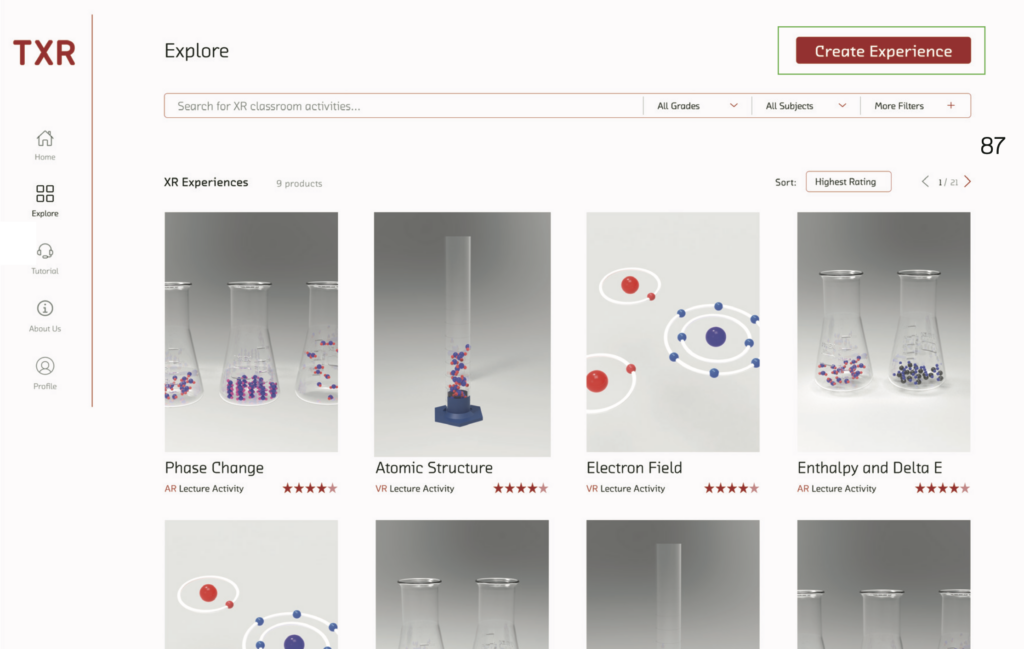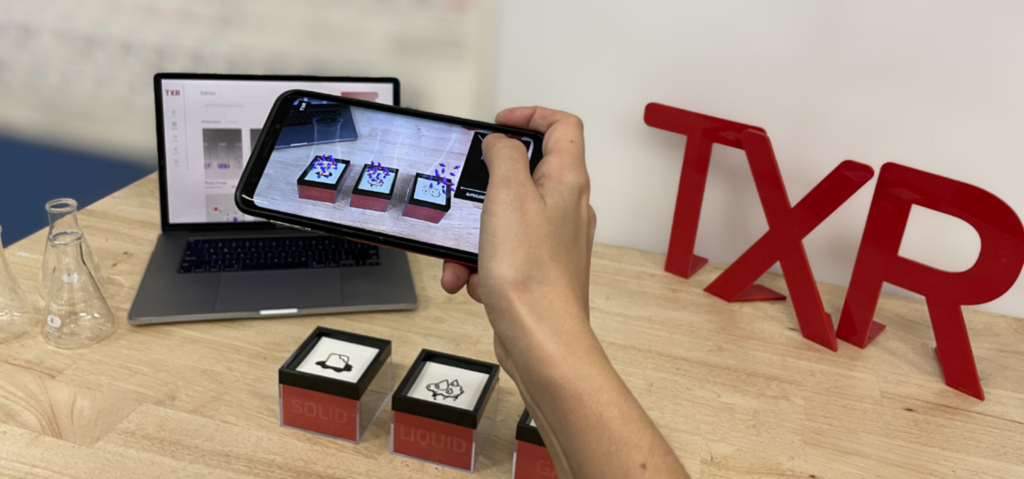Hannah Bartolomea
MDes Fall 2022
How might we enable high school teachers to use XR tools to enhance classroom storytelling?
Introduction
It is difficult to teach microscopic chemistry topics. Virtual and augmented reality technologies have been shown to improve student learning of 3D science topics by allowing students to learn about these concepts in 3D space (Johnston et al., 2018; Lamb et al., 2018). Yet, the integration of digital technologies does not automatically support learning (Kalantzis & Cope, 2015).
Emerging XR technology is providing new ways to improve student learning, but that means nothing if teachers are not able to implement those learning methods in their classrooms. Many teachers struggle because they do not have time to become sufficiently familiar with new technologies (Walan, 2020) and receive few guidelines on how the technology should be coupled with the subject matter (Walan, 2020).
Thie project speculates that if a teachers were supported with implementing XR technologies in their classrooms, then they could use XR tools to explain microscopic science concepts in a way that is easy for students to understand.
Methods
 That hypothesis will be tested through a case study of Aaron Glimme, a chemistry teacher at Berkeley High School. This case study builds the foundation for future work to understand how a a tool that provides guidelines for implementing and customizing XR experiences can enable teachers to enhance storytelling of complex chemistry topics by using XR technology in their classrooms. The case study will include interviews with Aaron, observations of his classroom, and designing iterative storyboards, wireframes, mock-ups, and prototypes, all led by observations and direct feedback from Aaron.
That hypothesis will be tested through a case study of Aaron Glimme, a chemistry teacher at Berkeley High School. This case study builds the foundation for future work to understand how a a tool that provides guidelines for implementing and customizing XR experiences can enable teachers to enhance storytelling of complex chemistry topics by using XR technology in their classrooms. The case study will include interviews with Aaron, observations of his classroom, and designing iterative storyboards, wireframes, mock-ups, and prototypes, all led by observations and direct feedback from Aaron.
The decision to create a desktop tool and an AR experience was a direct result of initial research. Before even defining a problem statement, a literature review and
an interview with Aaron was conducted to better understand the problem space. The two main findings were that: students struggle to learn 3D concepts and that teacher customization preferences vary. This led to two design goals: 1. Create a tool that empowers teachers to create, share, and prepare XR lessons for their classrooms— including guidelines and instructions for lesson planning. 2. Create an AR activity with Aaron as an example of what could come out of the customization tool.
Final Design
The final design includes a high fidelity interactive experience of the TeachXR desktop tool, built using Figma, and a mid fideltiy prototype of the AR experience designed by Aaron, built onto a Samsung S9 mobile device using Unity and Vuforia.
This is composed of two parts: 1. The TeachXR desktop tool which enables teachers to prepare XR lessons for their classroom including guidelines and instructions for lesson planning (interactive Figma prototype). 2. An AR activity that is designed by Aaron as if it were built from the customization portion of the TeachXR desktop tool, to provide an example of what could come out of the customization tool. (Deployed on an Android Samsung S9, built using Unity).

The AR experience was designed as a possible outcome of the TeachXR tool as if it had been designed by Aaron Glimme. This app is designed for Aaron to illustrate phase change at a molecular level.

Conclusion
Findings from this study demonstrate that high school teachers are interested and capable of implementing XR technology into their classrooms. It is clear that teachers can use this technology to illustrate hard-to-see 3D concepts, while still maintaining control over the classroom. However, to empower teachers to use this intimidating technology, it is essential to replicate successes from current educational content platforms, and create a community for teachers to share and review evolving content.
In sum, we have created and engaging and effective tool to inform and empower high school teachers to use XR technologies as a storytelling tool. TeachXR creates a future where XR technologies are accessible and exciting for teachers. In this future teachers have the power to build, share, and edit 3D content for their personal storytelling purposes—teachers are not only given the tools to teach XR but also to create it themselves!

Full listing